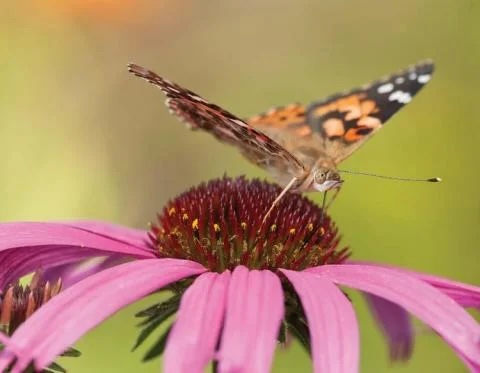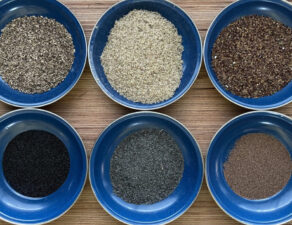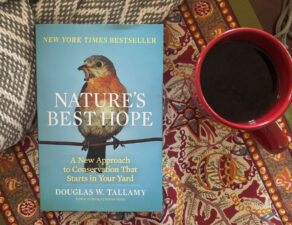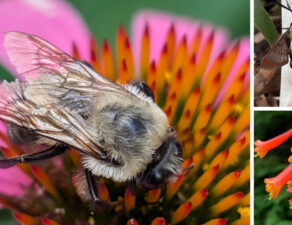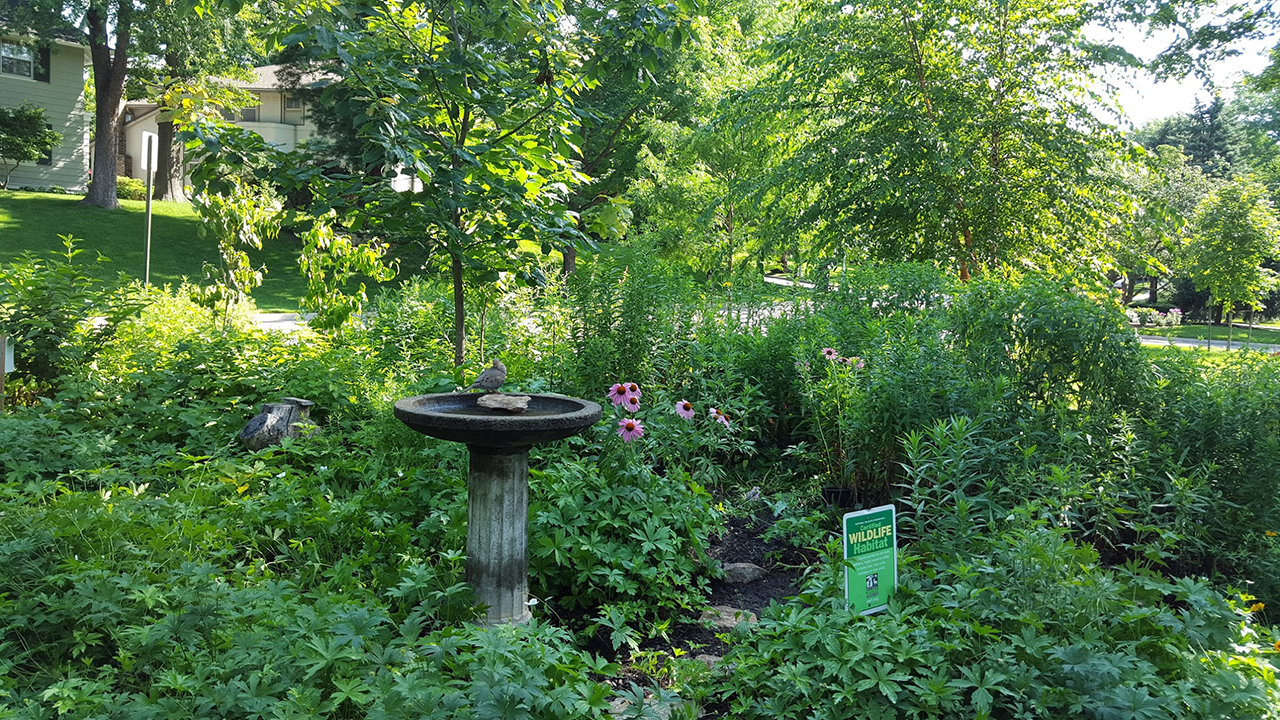
By Stacia Stelk and Denna Nachlinger
Most of us think of nature as “away” instead of “outside my back door.” In fact, the outdoor areas where we live are critical parts of our ecosystems.
An ecosystem is a group of organisms interacting with each other and with their environment. Ecosystems come in all different sizes. All of planet Earth is an ecosystem. Zooming in, a prairie is an ecosystem. Even a single scoop of soil can be described as an ecosystem. (Did you know that grasslands are the most threatened ecosystem on the planet and least protected?) An ecosystem consists of all its plants, insects, and other animals interacting with each other and with nonliving things like soil, sunlight, air and water. All these elements exist in your outdoor spaces, and you are part of that ecosystem too!
Within your ecosystem, food webs describe how your ecosystem’s plants, insects, and other animals get their energy. Specifically, these food webs describe the path where energy flows through the ecosystem. Plants take sunlight and turn it into energy while absorbing water and nutrients from the ground. Insects feed on plants. Birds feed on plants and insects, and so on. If one of these elements is lost, the food web is broken. For example, if we lose milkweed, we lose monarch butterflies because their caterpillars ONLY feed on milkweed.
Monarchs and milkweed plants are an excellent example of co-evolution. Co-evolution is the process of evolutionary change that happens as species interact with each other. This process happens over thousands of generations, which can take thousands of years. Milkweed evolved a defense system that includes hair on its leaves, sticky sap, and toxins to keep animals from eating it. The monarch evolved and overcame these defenses. The monarchs’ caterpillars are one of the few species that can eat it. In fact, monarchs not only digest the milkweed toxin, they also retain the toxicity and use it for their own defenses. When a bird eats a monarch caterpillar, it vomits, and never eats a monarch caterpillar again. The monarchs’ evolution is so specific to milkweed plants that its caterpillars cannot eat other plants. We refer to the milkweed as the monarch’s host plant.
Thriving ecosystems are held together by keystone species. Oak (Quercus) trees and showy goldenrod (Solidago speciosa) are examples of keystone plant species. Both oak trees and goldenrods support hundreds of species of butterflies and moths (Lepidoptra). With butterflies and moths supporting birds and other species, you can see the importance of a keystone plant in this food web and ecosystem. When thinking about hosting a healthy ecosystem in your yard, remember what you plant matters!
This article is the first in a series to help people get started, or improve, their native plant gardening knowledge. Next month, we will talk about site assessment and preparation.
Want a deeper dive to learn more about Your Yard’s Place in Nature? Take a moment and watch episode one of our Beginner/Refresher Garden Webinar Series. It is a five-part series that will help you understand why native plants are important, how to get started and how to maintain native plant gardens. Over the next few months, we will provide a synopsis of each episode. You can view the episodes in their entirety on the Beginner/Refresher Series page of our website.
